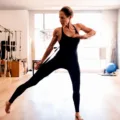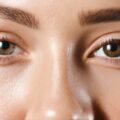The Importance of Proper Blood Flow
Good circulation is vital for overall health and wellbeing. When blood flows freely, it brings oxygen and nutrients to every cell and tissue in the body. Unfortunately, many people experience poor circulation at some point due to conditions like atherosclerosis or diabetes.
12 Science-Backed Methods to Boost Circulation
- Exercise regularly – Any type of regular movement helps stimulate blood flow. Try to exercise at least 30 minutes per day.
- Stretch – Gentle stretching helps relax muscles and improve venous circulation.
- Massage – Therapeutic massage manually moves blood through congested areas of the body.
- Elevate your legs – Keeping your legs raised above heart level helps blood flow back to the heart.
- Try compression socks – Special socks apply pressure that encourages better circulation in the legs.
- Drink green tea – Compounds in green tea called catechins promote healthy blood vessel function.
- Eat beets – Dietary nitrates in beets produce nitric oxide to expand blood vessels.
- Quit smoking – Smoking impairs circulation by damaging blood vessels and decreasing nitric oxide.
- Manage diabetes – Poor blood sugar control accelerates circulatory damage from diabetes.
- Lower cholesterol – Cholesterol accumulation contributes to atherosclerosis and blocked arteries.
- Hydrate adequately – Being well-hydrated helps blood flow more efficiently.
- Reduce stress – Chronic stress causes inflammation that harms circulation.
Frequently Asked Questions
Can cold hands and feet be caused by poor circulation?
Yes. Numerous conditions can restrict blood flow to the hands and feet, causing them to feel perpetually cold. Improving overall circulation should help increase blood flow to the extremities.
What foods are good for improving circulation?
Some foods high in nitric oxide, nitrates, and antioxidants can aid healthy blood flow. Key examples are citrus fruits, leafy greens, fatty fish, beets, pomegranates, garlic, olive oil, and foods rich in vitamin E.
Can compression socks help varicose veins?
Sometimes. While compression socks don’t treat underlying causes of varicose veins, they can help relieve aching, swelling, and discomfort by supporting vein walls and improving venous circulation.
Is walking or running better for circulation?
Both walking and running boost circulation by contracting leg muscles to push blood back to the heart. Running provides a more intense muscular contraction. But a moderate walking regimen is often easier to sustain long-term.
Can cold showers improve blood circulation?
Yes. Alternating between hot and cold water during showering triggers a pumping action that moves stagnant blood through vessels. This is similar to the effect of contrast therapy.









